Laura Knight in 5 Paintings: Capturing the Quotidian
An official war artist and the first woman to be made a dame of the British Empire, Laura Knight reached the top of her profession with her...
Natalia Iacobelli 2 January 2025
Lavett Ballard in her art practice creates a lexicon of images of African American culture and female identity. The physical testimonies of the artist’s family history (such as photographs and a family house) inspired her into creating art that reflects her identity.
I was drawn to the history of the log cabin that held generations, of my family in a home surrounded by photographs that chronicled our family history. This experience helped to foster an interest in visual storytelling. While fusing the wood that surrounded the summers of my youth. My strong affinity for imagery and history has led me to focus on creating a visual lexicon of African American, female, self-identity.
Lavett Ballard, Artist’s website.
Lavett Ballard is an accomplished artist with a solid academic background in art and art history. Through her work, she explores several themes such as history, Colorism, Afro-Futurism, and feminine beauty. She thus creates works of art as visual narratives of people of African descent. Her work has had the recognition of several collections, galleries, and museums nationwide through multiple exhibitions. In addition to that, the American magazine Black Art in America named her one of the top ten female emerging artists to collect. Moreover, Time Magazine commissioned her work of art The bus rider, which depicts Rosa Parks, as a cover for its special Woman of the Year edition in March 2020.
Make sure to check out her biography.
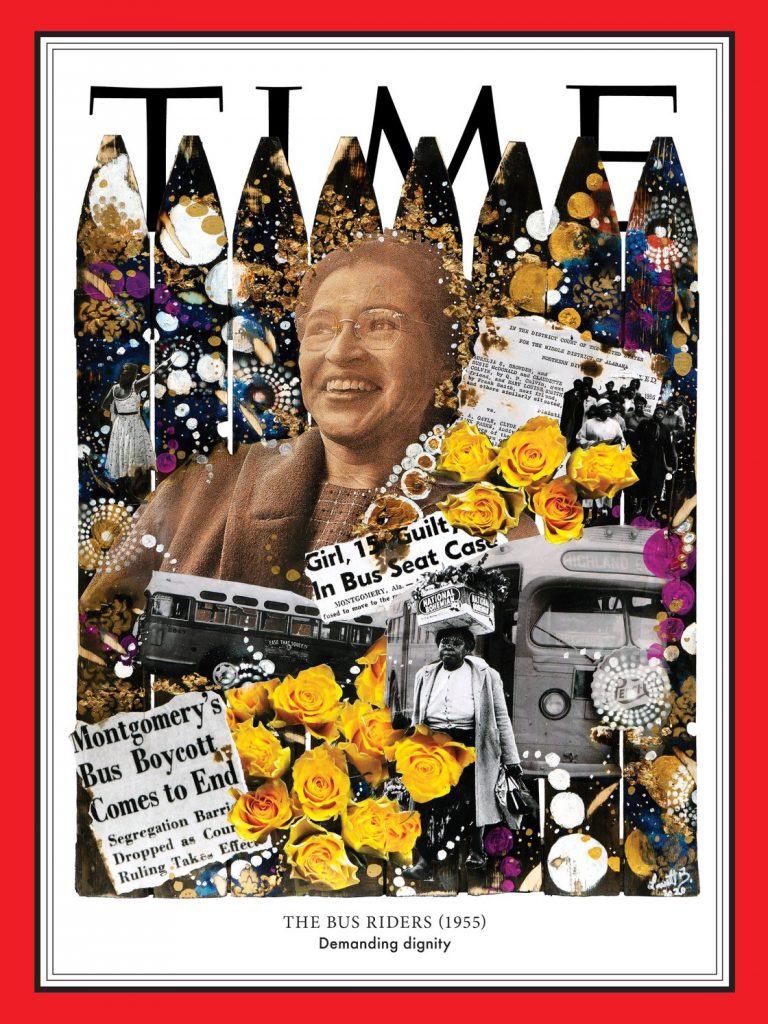
In 2020, the Long-Sharp Gallery in Indianapolis and New York, showcased a solo exhibition of Lavett Ballard’s work in their virtual gallery. In the exhibition: When She Roars, the artist paid tribute to the fights of Black women in America by presenting the power of their voices. The women in the paintings roared to impose themselves and ask for justice in a country that discriminates against them.
When she is quiet, she is ignored. But the world stands to attention when she roars.
Lavett Ballard, exhibition e-catalogue.
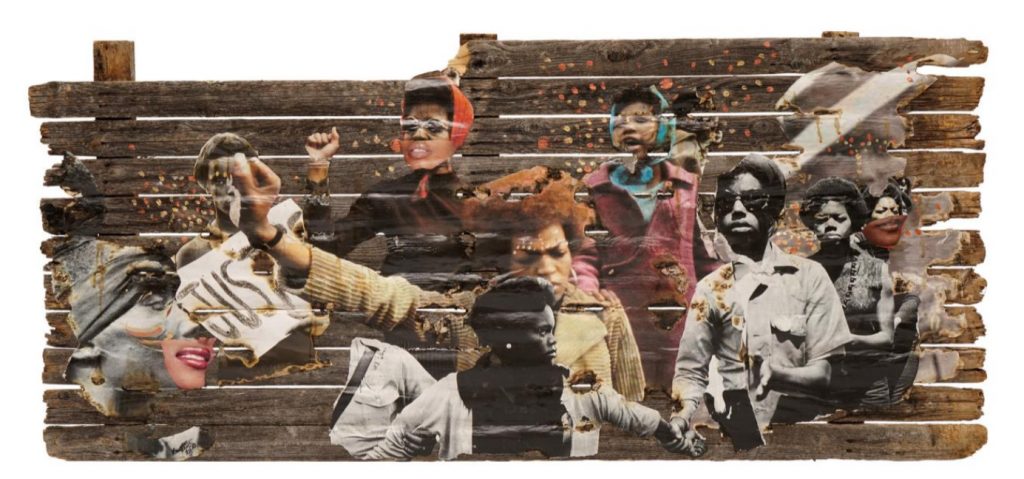
History fills Lavett Ballard’s works of art; both her personal family history and Black women’s history. When you look at her art you can see pictures that belong to her family associated with pictures she found in historical archives. In this assemblage of photographs, she restores the history of women of the African diaspora and shows it to the world. The artist emphasizes the African identity of the women by adding tribal marks on their faces.
I’ve spent hours compiling a photographic catalog of female images that cover the African diaspora over different geographic areas and historical periods.
Lavett Ballard, artist’s website.
For that purpose, the artist put together photographs of many people as a sort of crowd. It creates a narrative and gives the impression of a group dynamic. It, therefore, underlines the importance of sisterhood in the fight to get their voice heard.

Lavett Ballard uses wood fences as a medium for her artistic expression. The choice of a fence as a canvas is quite significant. Usually, we use fences to keep people from each other or to lock them up. Here, she exploits those common meanings and exceeds them to use the fences as expressive supports.
I use reclaimed large and small aged wood fences, as a symbolic reference to how fences keep people in and out, just as racial and gender identities can do the same socially. These fences are then arranged as ‘altars’ as icons to honor the strong self-identity of each subject.
Lavett Ballard, artist’s website.
When we virtually walk around the online exhibition and look at the back of the stand fences, we can see what the artist calls “shadow figures”. They are little black-and-white photographs of women, hidden behind the main ones. Those figures can embody the marginalized women whose roar is not heard. Besides, they complement the front figures and keep the eyes of the viewers focused on the narrative. No matter where the viewer are standing, they can see the shadow figures.
In addition to the photographs, the artist paints the fences with bright, vibrant colors and gold foil. We, then, can see an ambivalence between the violence of the situations she depicts and the life that the colors bring into the piece of art. This ambivalence thus emphasizes the power of the message.
It is all the more powerful that, even though the artist uses historical photographs, the injustices and the struggles are still very much an accurate representation of today’s society, especially in America.
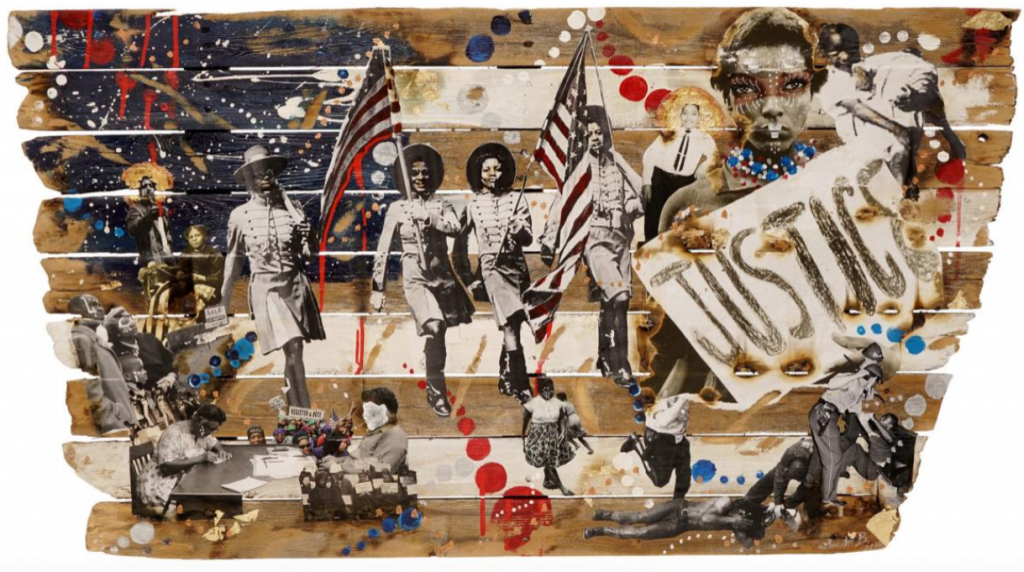
Since 2020, the Galerie Myrtis in Baltimore has had an online exhibition on its website: Women Heal Through Rite and Ritual. The exhibition is collaborative, there are works by Lavett Ballard but also Tawny Chatmont, Oletha DeVane, Shanequa Gay, Elsa Muñoz, Delita Martin, and René Stout. The exhibition unites the group of artists around the theme of women’s spirituality and its role in the process of healing.
[The artists] look to non-Western traditions for inspiration in exploring a woman’s role as nurturer of family and community; and as traditional healer, conjure woman, and clairvoyant who dwells in both the physical and spiritual realms.
Myrtis Bedolla, exhibition catalogue.
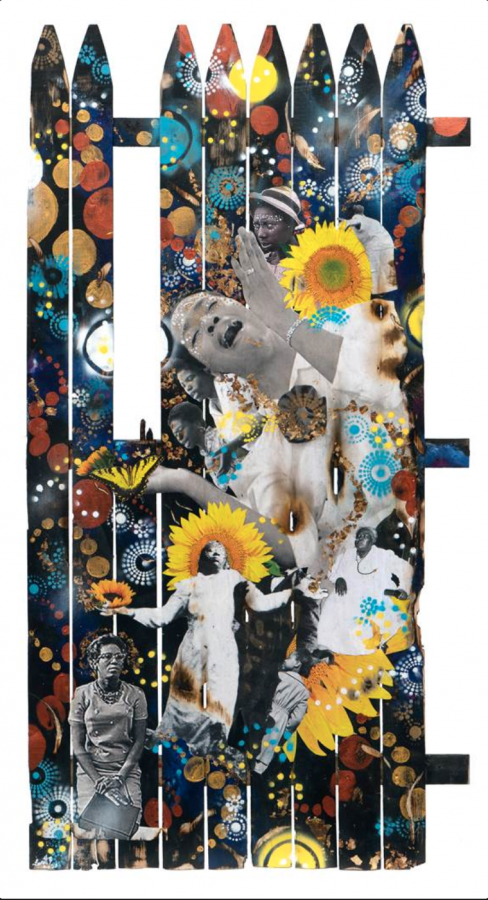
Through several mediums, the artists summon their cultural and spiritual roots to depict the central role of women in communities that are not driven by technology. From birth to rites of passage, they are thus the link between the physical and spiritual worlds.
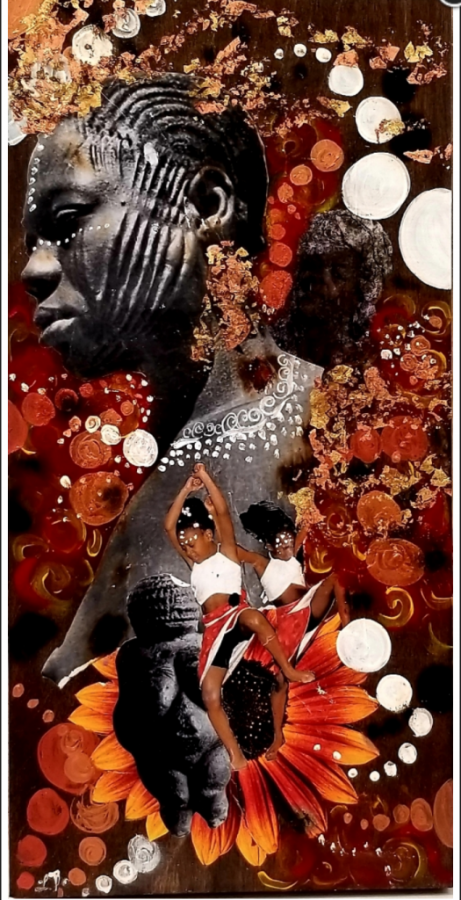
In this exhibition, Lavett Ballard presents collages on wood fences depicting women of African descent. The women in the works of art connect with their roots through the marks painted on their faces, their gestures, and the sense of community that the scenes embody. Moreover, the explosive colors and the presence of nature through flowers emphasize the spirituality that pervades these powerful works of art.
Therefore, I invite you to read the e-catalog to learn more about the exhibition!
DailyArt Magazine needs your support. Every contribution, however big or small, is very valuable for our future. Thanks to it, we will be able to sustain and grow the Magazine. Thank you for your help!